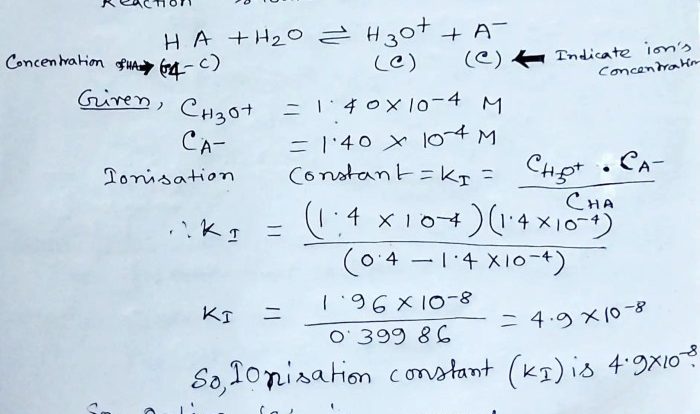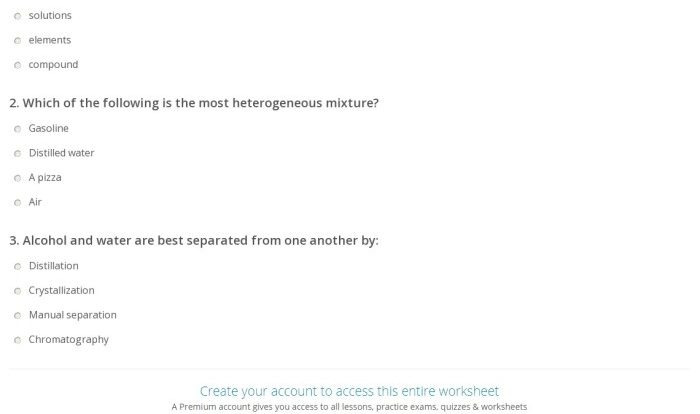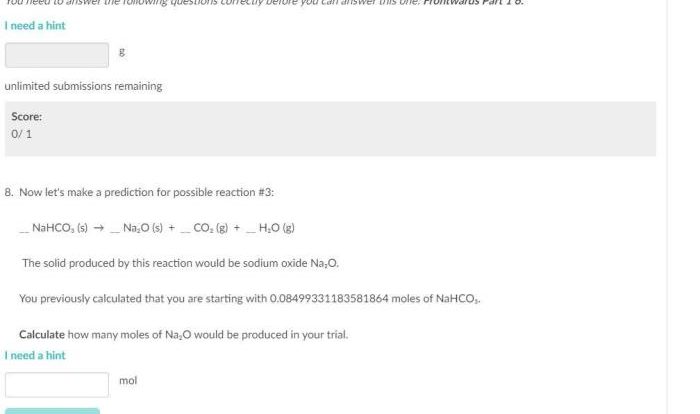Mixed gas laws worksheet answers – Delve into the fascinating world of mixed gas laws with our comprehensive worksheet answers! Prepare to embark on an enlightening journey where we unravel the intricate relationships between pressure, volume, and temperature in gas mixtures. Discover the secrets of Dalton’s law of partial pressures and delve into the significance of mole fraction in gas behavior.
Our meticulously crafted solutions empower you to tackle mixed gas law problems with confidence. We guide you through the steps involved, providing a structured approach to solving these intriguing challenges. Dive into our table of examples, where real-world scenarios bring mixed gas laws to life.
Mixed Gas Laws
Mixed gas laws govern the behavior of gas mixtures, providing insights into the relationships between pressure, volume, and temperature in such systems. These laws encompass Dalton’s law of partial pressures and the concept of mole fraction, offering a comprehensive understanding of gas mixtures.
Dalton’s Law of Partial Pressures
Dalton’s law states that the total pressure exerted by a mixture of non-reacting gases is equal to the sum of the partial pressures of each individual gas. Partial pressure refers to the pressure that each gas would exert if it occupied the entire volume alone.
This law highlights the additive nature of pressures in gas mixtures.
Mole Fraction
Mole fraction represents the ratio of the number of moles of a specific gas to the total number of moles in a gas mixture. It provides a quantitative measure of the relative abundance of each gas component. Mole fraction plays a crucial role in determining the partial pressure and other properties of gas mixtures.
Solving Mixed Gas Law Problems: Mixed Gas Laws Worksheet Answers
The combined gas law combines Boyle’s law, Charles’s law, and Gay-Lussac’s law to relate the pressure, volume, and temperature of a gas under different conditions. It is given by the equation:
where:
- P₁ and P₂ are the initial and final pressures of the gas, respectively
- V₁ and V₂ are the initial and final volumes of the gas, respectively
- T₁ and T₂ are the initial and final temperatures of the gas, respectively
The combined gas law can be used to solve a variety of problems involving changes in pressure, volume, and temperature.
Steps Involved in Solving a Mixed Gas Law Problem
The following steps can be used to solve a mixed gas law problem:
- Identify the given and unknown variables.
- Convert all temperatures to the Kelvin scale.
- Substitute the given variables into the combined gas law equation.
- Solve for the unknown variable.
Examples of Mixed Gas Law Problems and Their Solutions
The following table shows some examples of mixed gas law problems and their solutions:
| Problem | Solution |
|---|---|
| A gas has a volume of 1.0 L at a pressure of 1.0 atm and a temperature of 273 K. What is the volume of the gas at a pressure of 2.0 atm and a temperature of 373 K? | V₂ = (P₁V₁T₂) / (P₂T₁) = (1.0 atm
|
| A gas has a volume of 2.0 L at a temperature of 298 K. What is the temperature of the gas if its volume decreases to 1.0 L and its pressure increases to 3.0 atm? | T₂ = (P₂V₂T₁) / (P₁V₁) = (3.0 atm
|
| A gas has a pressure of 1.5 atm at a temperature of 323 K. What is the pressure of the gas if its volume increases to 2.0 L and its temperature decreases to 273 K? | P₂ = (P₁V₁T₂) / (V₂T₁) = (1.5 atm
|
Applications of Mixed Gas Laws
Mixed gas laws find widespread applications in various fields, including chemistry, engineering, and medicine. These laws provide a framework for understanding and predicting the behavior of gas mixtures, which is crucial in designing and optimizing processes involving gases.
Chemistry, Mixed gas laws worksheet answers
In chemistry, mixed gas laws are essential for studying chemical reactions involving gases. They help determine the partial pressures of different gases in a mixture, which is critical for understanding reaction rates and equilibrium. Mixed gas laws also play a role in gas chromatography, a technique used to separate and analyze gas mixtures.
Engineering
Mixed gas laws are vital in engineering applications involving gases, such as designing combustion engines, refrigeration systems, and gas pipelines. These laws allow engineers to calculate the pressure, volume, and temperature changes in gas mixtures during various processes, ensuring efficient and safe operation.
Medicine
In medicine, mixed gas laws are crucial for understanding and administering anesthesia. Anesthesiologists use these laws to determine the appropriate mixture of gases to induce and maintain anesthesia, ensuring patient safety and comfort. Mixed gas laws also play a role in respiratory therapy, where they are used to calculate gas flow rates and volumes in medical devices.
Advanced Topics in Mixed Gas Laws
Mixed gas laws provide a framework for understanding the behavior of gas mixtures. However, real gases often deviate from ideal gas behavior, requiring more sophisticated approaches.
Fugacity and Gas Mixtures
Fugacity is a measure of the escaping tendency of a gas component in a mixture. It is used to account for non-ideal behavior in gas mixtures, where the partial pressure of a component may not accurately represent its true escaping tendency.
Fugacity coefficients are used to correct partial pressures for non-ideality.
Real Gases and Non-Ideal Behavior
Real gases deviate from ideal gas behavior due to intermolecular interactions. These interactions can cause gases to exhibit deviations from the ideal gas law, such as:
- Deviations from linearity in the P-V-T relationship
- Non-zero values for the Joule-Thomson coefficient
- Formation of non-ideal mixtures
Virial Coefficients and Non-Ideal Gas Behavior
Virial coefficients are a series of constants that can be used to account for non-ideal gas behavior. The virial equation of state expresses the pressure of a gas as a power series in terms of the molar volume:
P = RT(1 + B/V + C/V2+ …)
where B, C, … are the virial coefficients. These coefficients can be determined experimentally and provide a means to correct for non-ideality in gas behavior.
Query Resolution
What is Dalton’s law of partial pressures?
Dalton’s law states that the total pressure exerted by a mixture of non-reacting gases is equal to the sum of the partial pressures of each individual gas.
How do I calculate the mole fraction of a gas?
To calculate the mole fraction of a gas, divide the number of moles of that gas by the total number of moles in the mixture.
What are the applications of mixed gas laws?
Mixed gas laws find applications in various fields, including chemistry, engineering, and medicine. They are used to design and optimize processes involving gas mixtures, such as gas separation, anesthesia, and combustion.


